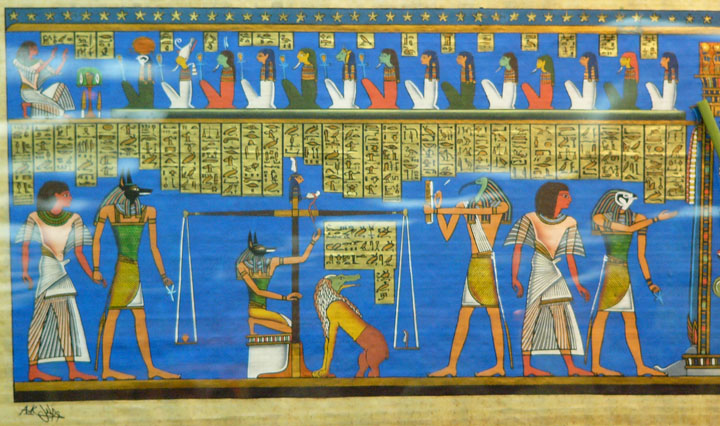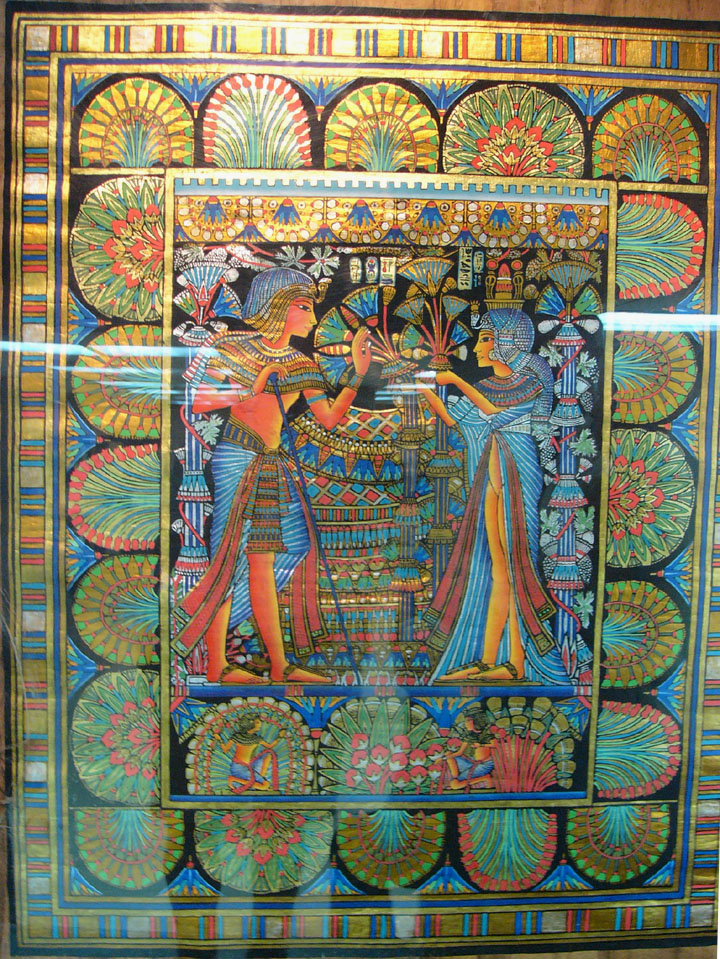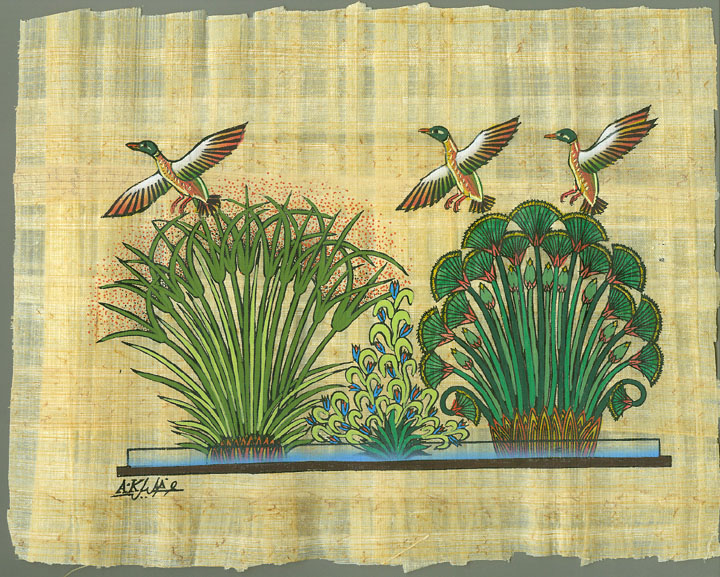

Papyrus
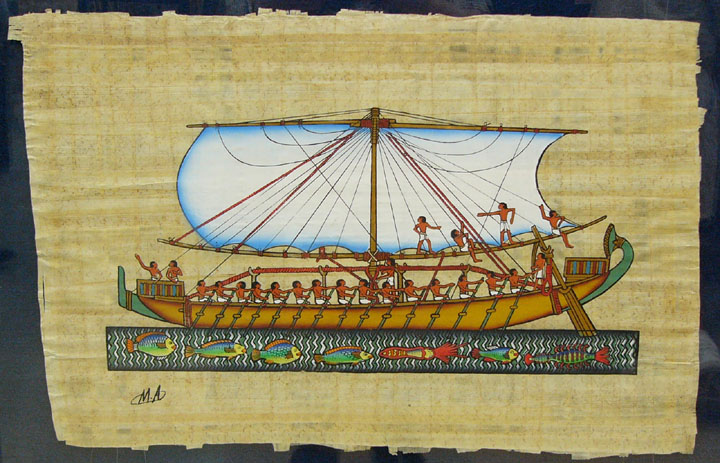
modern day papyrus
Papyrus, the writing surface named after the plant from which it is made, was manufactured as early as the first Egyptian dynasty, circa 3100 BCE. The emergence of writing and the concomitant use of papyrus seem to be an necessary outcome of the imperial bureaucracy.

papyrus plants growing outside the Cairo Museum
It was invariably used by the Egyptians until the 9th-1l th centuries CE, that is, for 4000 years but it was also used in the ancient civilizations of Kush, Greece and Rome.

demonstrating the pounding of the plant material
Papyrus was made from a reed which grew abundantly along the banks of the Nile in Lower Egypt and, in fact, became the symbol of Ancient Lower Egypt The plant grew to a height of about 10 feet. When harvested, the hard outer fibers were peeled away and the core was sliced into strips. When looking at a cross section of the papyrus reed, it appears to be triangular in shape The ancient Egyptians repeated this shape in many aspects of their life and artwork including the Pyramids at Giza.
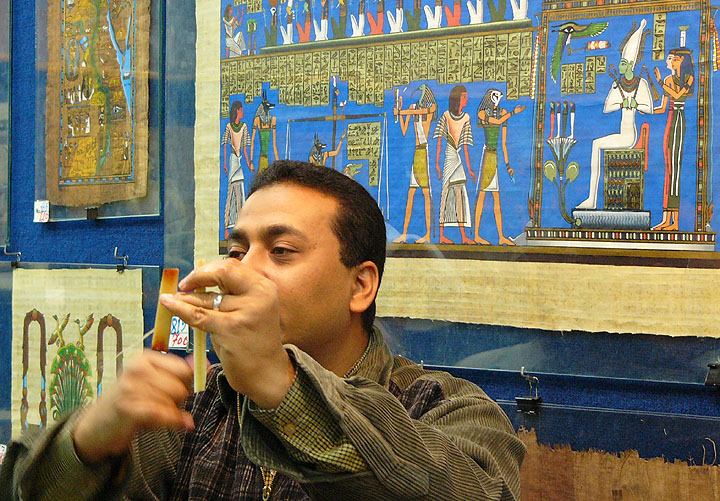
demonstration of splitting the plant stems
The strips were soaked in water. This removed most of the sugar content. After soaking, the strips were pounded and the water drained away. The strips were then placed side by side, overlapping slightly. A second set of strips was then placed at right angles to the first, again overlapping slightly. They were again pounded and left to dry under a heavy weight. Enough sugar remained in the strips to seal them together.

modern papyrus using an Old Egyptian theme
Finally, the surface was polished to a smooth finish by rubbing with a stone or block of wood. The surface was then ready for writing with paint or ink.

country theme
The main instrument of the scribe was the pen, kalamos, a reed that was cut to
some 15 cm and whose end was chewed to form a brush-like edge. The scribe had
several pens for various purposes, depending on the width of the script and its
color. The ancient Egyptian scribe used several colors (with organic and mineral
bases), because writing hieroglyphs was closely connected to drawing.
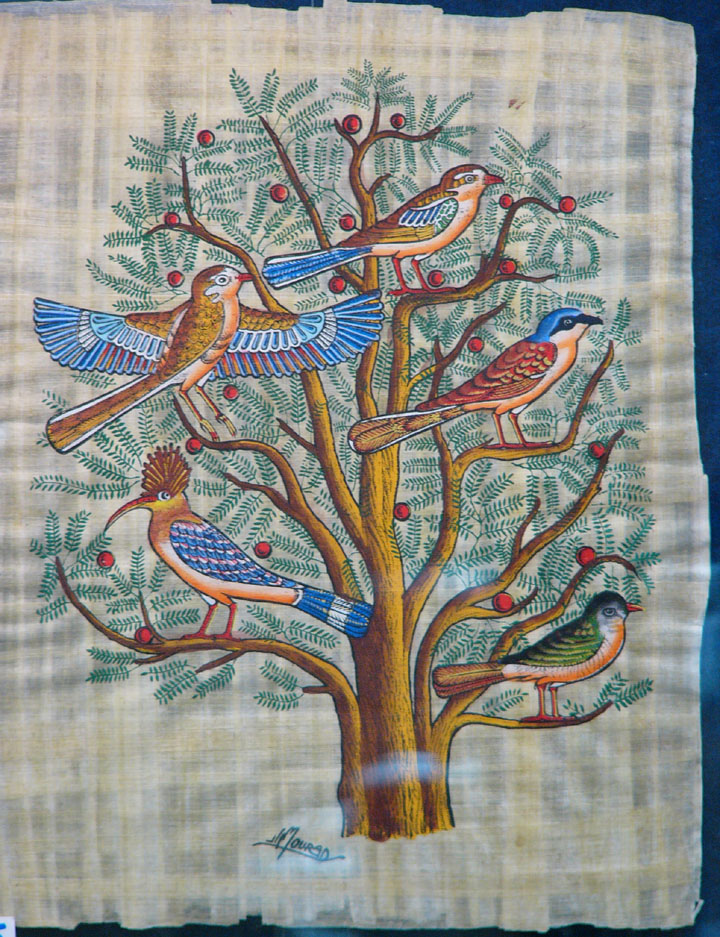
birds in a bush scene
